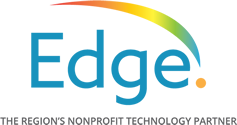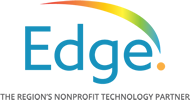Edison Township Public Schools is a comprehensive community public school district serving students in kindergarten through twelfth grade. With nineteen schools and over 15,000 students in the district, Edison is one of the larger school districts in New Jersey. Like many educational communities, Edison is faced with addressing the challenges related to rapidly-evolving technology and finding the budget to meet the advanced technology needs of today’s children. “Edison tries to maximize a limited funding source,” shares Ralph Barca, Chief Information and Technology Officer, Edison Township Public Schools Education Center. “For larger districts, spreading the budget to maintain all buildings and meet the needs of each child can be difficult. From K-12 in our district, every child has a device and we need to maximize that dollar to ensure we’re always evaluating technology and selecting the best, most affordable options.” Outfitting every child with a device he or she uses inside and outside the classroom is a large financial undertaking, not only to purchase the needed devices, but maintaining them as well. “In addition to the device purchase and maintenance, we must have the infrastructure in place to support the activities that are taking place in the classroom,” says Barca.
As Edison designed their strategy, the District divided their technology approach into three categories. “We felt a touch-type of device, like an iPad, would best suit our young learners; kindergarten and first grade,” says Barca. “As students enter second grade, we introduce a keyboard-type of device, like a Chromebook, to begin introducing these students to this technology. As we move into older grades and high school, our District explored which devices are being used in the higher education space and felt a MacBook would be the most suitable.” Barca says the variety of technology does introduce a certain complexity to the technology staff who must monitor, maintain, and support three different technologies, but after five and a half years of doing so, Edison feels comfortable they are moving in the right direction.
Evolving Technology
Barca has been in education for 22 years and considers himself a technologist who specializes in K-12 education. Back in the mid-to-late 90s, technology was very limited and was used primarily on the operational side of education. “As we started to add technology to the classroom, there was a learning curve for both teachers and students,” says Barca. “Now, students have a device at their desk and teachers are using interactive whiteboards, so the educational experience is becoming more interactive and personalized.”
An important aspect of introducing new technology to a school district is providing the professional development necessary to adapt teachers to unfamiliar devices or applications. “When I came to Edison in 2014, the infrastructure was at the beginning,” shares Barca. “We paid teachers to come in during the summer to train them on Chromebooks and the associated curriculum. This transition represented a significant investment in technology for the District; building up the infrastructure, purchasing the devices, and training instructors.”
The Role of Cybersecurity
As technology for Edison evolved, the approach to security was required to change to address the potential new threats brought on by new devices and on and offsite access. “When we first started introducing technology into school districts, everything was localized,” explains Barca. “If there was a virus, the issue was more of a nuisance. Now, with everything being hosted on the Internet and the broad bandwidth capabilities, cybersecurity has become our No. 1 concern and for this reason, Edison reached out to Edge.”
With every student and teacher having a device and each person in the district using an email or a login, Edison has had to update how they handle security. “With every user, you’re opening up to new vulnerabilities,” says Barca. “Not every user is proficient in technology, but they need access to email or to an employee portal for their personal information. This situation can introduce huge risks, so we use a multilayer approach to counteract the potential threats, including training the end user how to use the technology and what to be aware of with cybersecurity, which is one of the most important pieces to combating security issues.”
“The Human Firewall”
Attendees at EdgeCon last year learned about “The Human Firewall,” a concept that puts users as the first line of defense against cyber threats. A growing awareness of cybersecurity among staff and students is being seen across many school districts, including Edison. “Cybersecurity comes down to the end user,” says Barca. “One person clicking on a phishing email could give away their personal information or downloading a piece of ransomware could spread across the district. Edison is continually adding training, especially for new users, to help educate everyone of potential issues and the do’s and don’ts of using technology.”
Seeking the Guidance of Edge
Barca says while at a security conference, he was pondering to himself about the ideal scenario for Edison wherein they could have a Chief Information Security Officer (CISO) on an ‘as needed’ basis or a virtual CISO (vCISO) as an option. “I was thinking how much Edison could benefit from a mentor who could guide us and who we could tap into. We could not afford to have a full- time staff member devoted solely to cybersecurity, so services offered through a vCISO-type program was very appealing.” Ironically, when he returned to his office following the conference, he received an email from Edge about their EdgePro vCISO program. He promptly requested an exploratory meeting and the rest, as they say, was history.
The affordability and virtual availability of the vCISO program interested the Edison District and Edge was a good fit in meeting Edison’s expectations and goals. “Technology-wise, we know what we have to do, but there’s so much more than just technology in a case of attack,” says Barca. “In the event of a cybersecurity issue or physical security attack, there are so many different pieces involved, including public relations, Human Resources, and business offices—having a vCISO helps bring all these areas together. The opportunity to tap into the expertise of this Edge program is priceless.”
Edison and Edge are currently in the fact-finding stage and the team is gathering documentation as they work to put a plan in place. Barca says the flexibility of the vCISO program is very beneficial as weekly workload and priorities shift. “Once we gather all the needed information, we will work with Edge to start evaluating what we have, what we need to do, and the plans for infrastructure. We will also review our processes and the effectiveness of our internal and external communication and ensure our staff is trained properly. As a team, we’ll want to look at any deficiencies and determine how to improve these weaknesses to build a solid defense against what could happen and prepare to handle those possibilities.”
An important benefit derived from Edge’s vCISO program is the ability to offload specialized cybersecurity planning to an expert resource, allowing internal teams to focus on other projects and programs. For Edison, their team will be able to devote more time to physical security initiatives and upgrading their security surveillance systems. In addition, the District is working with the Federal Government to fund an infrastructure upgrade to support an E-rate program. “Our infrastructure is like a highway that has to handle X number of cars every day at a certain speed,” says Barca. “As technology needs change, we have to make sure the framework, support, and security are in place to ensure our teachers and students are engaged and successful.”

